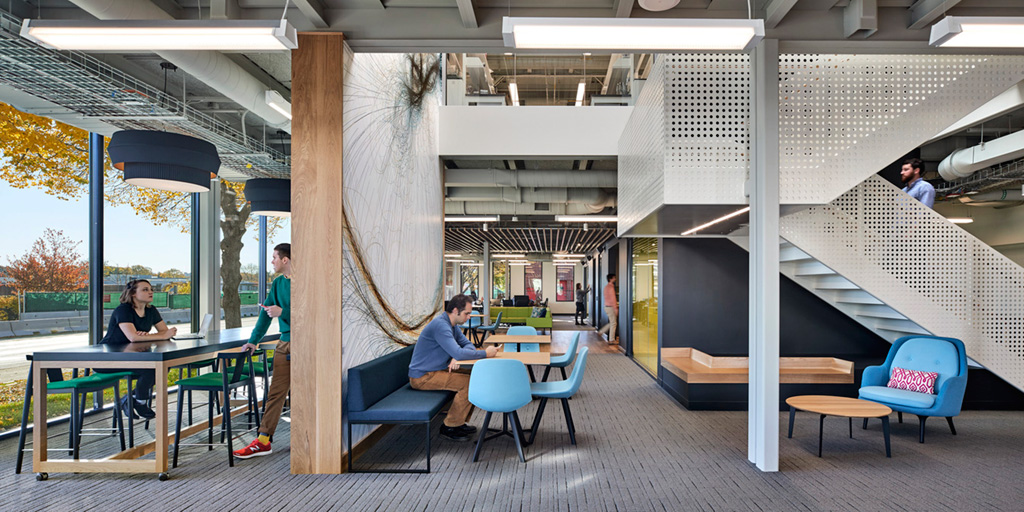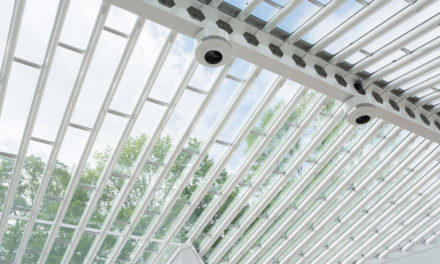Awards recognize projects for original design applications
WASHINGTON – Oct. 22, 2018 – The American Institute of Architects (AIA) is recognizing two exceptional design projects with its 2018 Innovation Awards. Complete details for each awarded project are available on AIA’s website.
The Innovation Awards recognize the exemplary use and implementation of innovative technologies and progressive practices among architects, designers, collaborators and clients. Awarded projects must support the design, delivery and operation of buildings or research in practice and academia. This year’s recipients for the 2018 Innovation Awards—which were selected by AIA’s Technology in Architectural Practice Knowledge Community—are as follows:
Category B: Project Delivery & Construction Administration Excellence
Pagliuca Harvard Life Lab, Allston, Massachusetts | Shepley Bulfinch
According to the AIA’s 2018 Innovation Awards page , the Pagliuca Harvard Life Lab provides much-needed space for life science ventures that have a connection to the Harvard University community.The design palette intentionally blends the industrial aesthetic with a lively but sophisticated finish palette, reflecting a professional space where creativity and risk-taking thrive. Flooded with natural light from a skylight above, an open perforated metal staircase connects the two floors, features a dramatic art piece that visualizes the movement of synthetic neural systems.

The Life Lab’s exterior palette includes concrete, metal panels, and glass. The building’s stepped form and cantilever are in response to the constraints of easements and existing parking at its site. Photo: ©Robert Benson Photography

The randomized texture of the Life Lab’s high performance concrete rainscreen panels provides both a functional solution to address the joints of the building as well as a rich and dynamic texture that changes throughout the day depending on sun angles and shadows. Photo: ©Robert Benson Photography
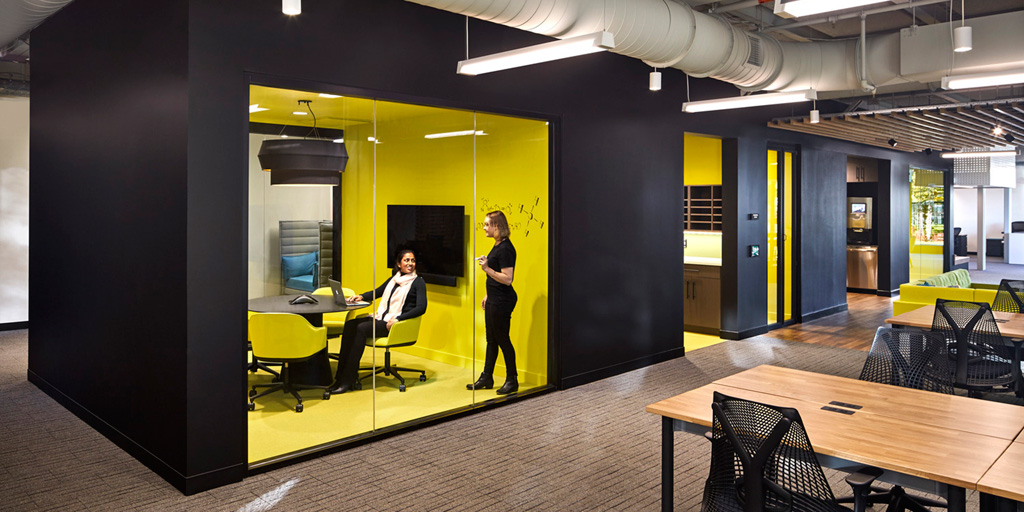
The Life Lab’s first floor features an open layout anchored by a black-painted core that houses enclosed meeting rooms, phone booths, and a kitchen. Photo: ©Robert Benson Photography
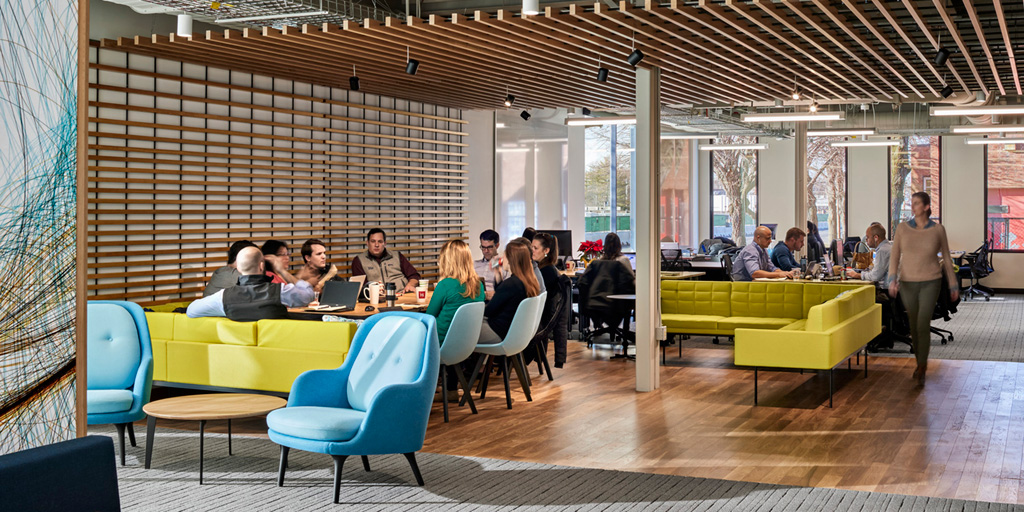
Social areas defined by wood ceilings and floors provide definition to the open first floor while still allowing the flexible furniture to move and accommodate a range of activities and special events. Photo: ©Robert Benson Photography
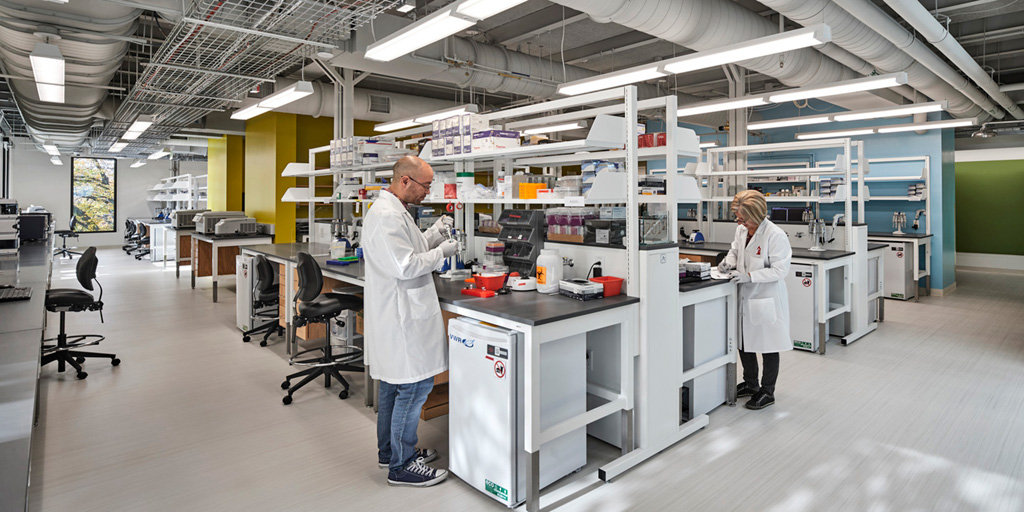
The second floor lab area features 30 wet lab benches rentable by venture teams, alongside shared tissue culture rooms, fume hoods, and a cold room. A private 1,000 square foot suite, with six additional benches, provides a unique space for a larger, more experienced team that can mentor and support the other start-ups. Photo: ©Robert Benson Photography
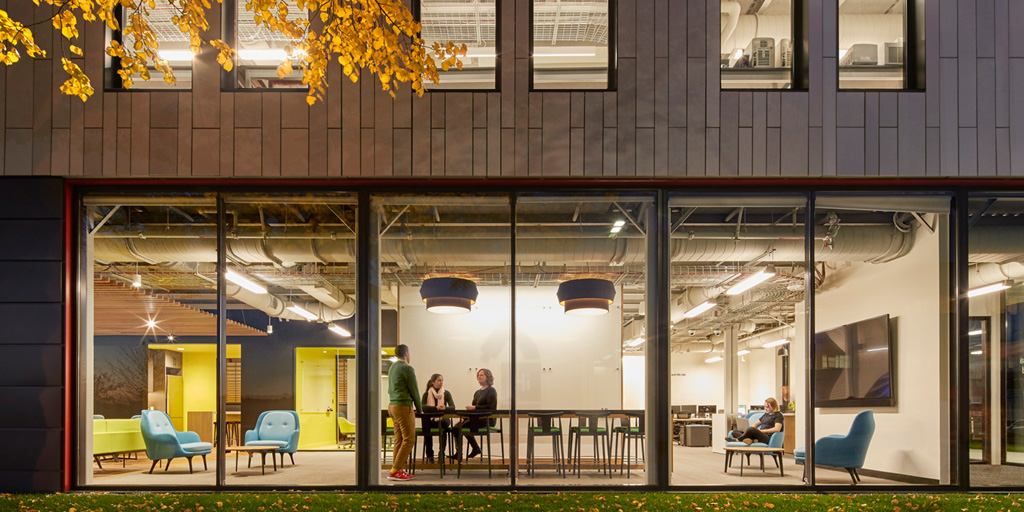
Large expanses of glass provide a high level of transparency to the street. Photo: ©Robert Benson Photography
Category D: Practice-based or Academic Research, Curriculum or Applied Technology Development
Stalled! | Joel Sanders
The AIA’s 2018 Innovation Awards page describes Stalled!
Stalled! takes as its point of departure national debates surrounding transgender access to public restrooms to address the design consequences of an urgent social justice issue: the need to create safe, sustainable and inclusive public restrooms for everyone, irrespective of age, gender, religion and disability. Using an innovate methodology that assembles a cross-disciplinary research team of architects, transgender historians, and legal scholars, Stalled! explores the question of all gender restrooms from a cultural, political and legal perspective. Our mission is to create viable economical restroom guidelines and prototypes for retrofit and new construction projects that can be adopted and deployed across the United States.
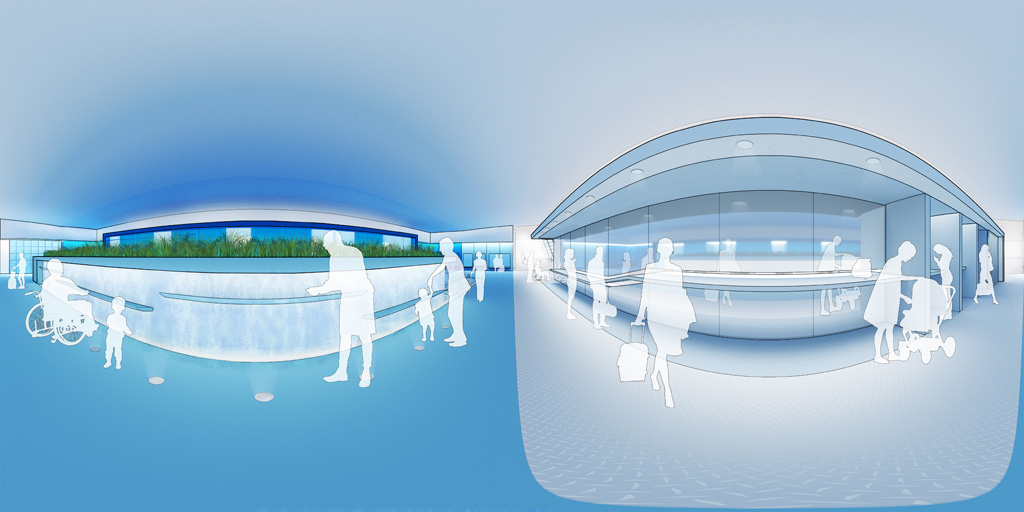
Funded by a grant awarded by Hewlett Packard and Yale University, Stalled! devised virtual models that will allow people to experience the audio-visual qualities of Stalled! prototypes. The above is an unfolded 360 render of the airport bathroom prototype. Image courtesy of JSA (Joel Sanders Architect) and Brenna Thompson (Yale School of Architecture)
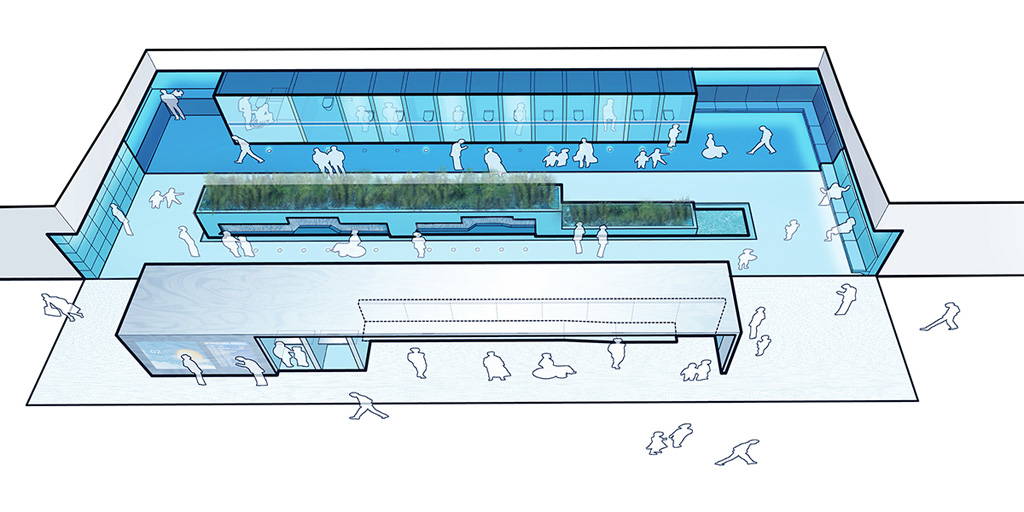
Above is an aerial view of the Stalled! prototype for a generic airport restroom, that is subdivided into three parallel activity zones, each dedicated to grooming, washing and eliminating. Image courtesy of JSA (Joel Sanders Architect) and Brenna Thompson (Yale School of Architecture)
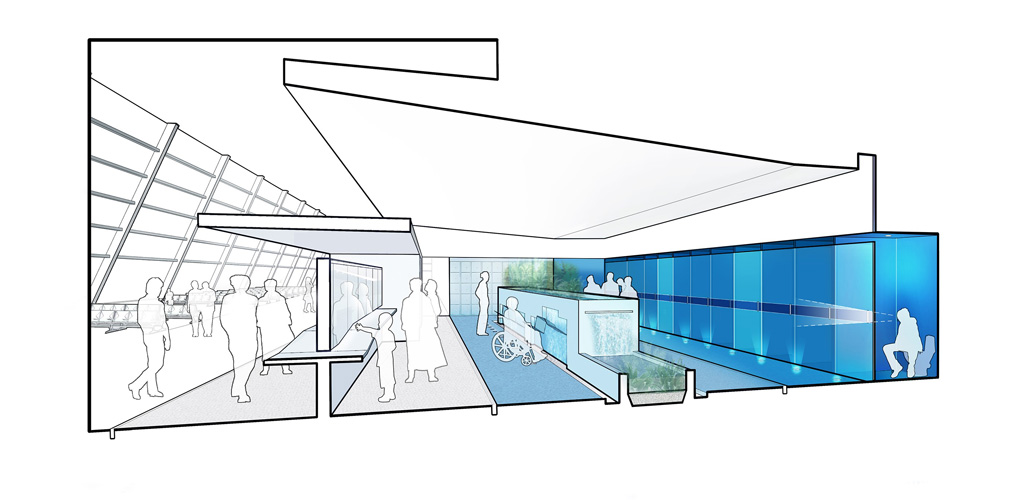
Passing from the outermost grooming station to the innermost toilet wall, users experience a multi-sensory gradient that takes them from public to private, open to closed, smooth to coarse, dry to wet, acoustically reverberant to sound-absorptive, ambient to spot lighting (left to right). Image courtesy of JSA (Joel Sanders Architect) and Brenna Thompson (Yale School of Architecture)
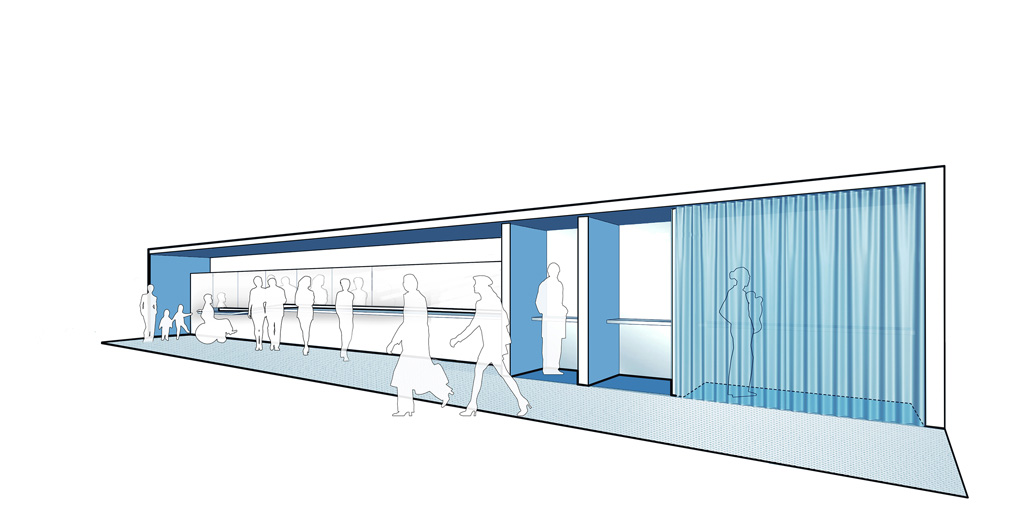
The grooming station features a multi-level counter that serves people of different heights and abilities. Those who want privacy can retreat into curtained alcoves for breastfeeding, administering medical procedures such as insulin injections, meditation and prayer. Image courtesy of JSA (Joel Sanders Architect) and Brenna Thompson (Yale School of Architecture)
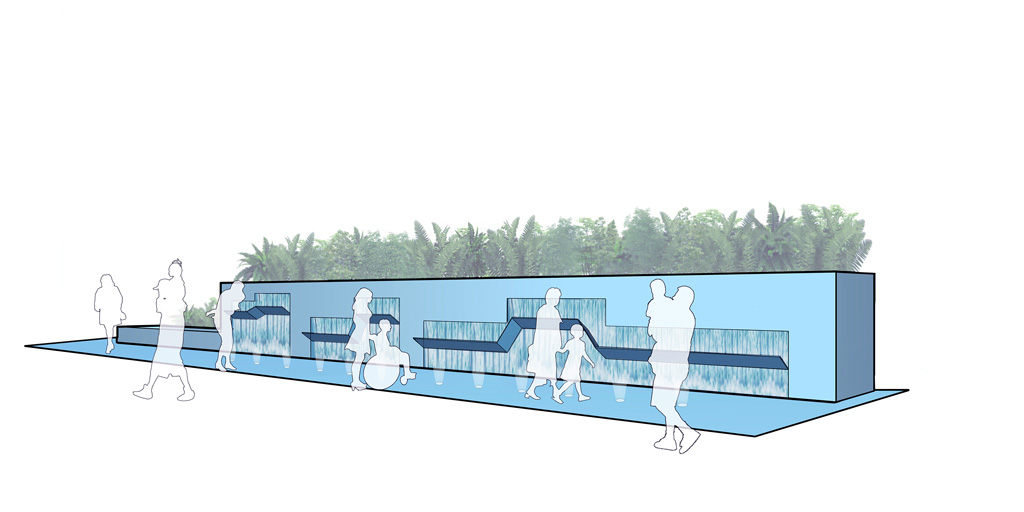
Inset floor lights indicate motion-activated faucets that allow water to flow into inclined splash planes at different ergonomic heights, which is collected and cleaned in a remediating planter before being recycled. The scent of plants and the ambient sounds of flowing water mask bodily sounds and odors. Image courtesy of JSA (Joel Sanders Architect) and Brenna Thompson (Yale School of Architecture)

Recessed floor lights indicate unoccupied stalls: when users enter, they turn off and the stall glows from within. From the inside, users can surveil their surroundings through a one-way mirror band located at seated eye-level. Composting toilets treat human waste through aerobic decomposition. Image courtesy of JSA (Joel Sanders Architect) and Brenna Thompson (Yale School of Architecture)
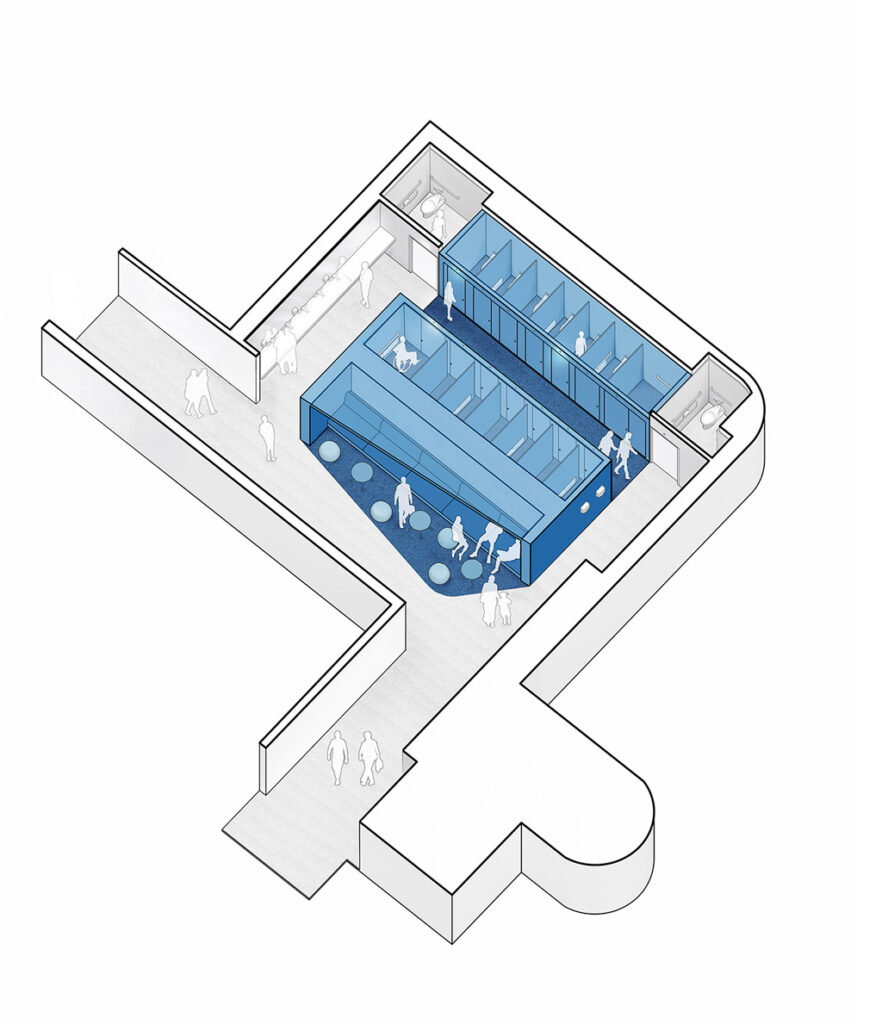
Stalled! is collaborating with Gallaudet University to develop an inclusive restroom and changing room prototype for their Field House sports facility. On the Upper Level, we are converting existing back-to-back sex-segregated facilities into a multi-unit facility equipped with communal grooming/washing stations and fully enclosed stalls. Image courtesy of JSA (Joel Sanders Architect) and Brenna Thompson (Yale School of Architecture)
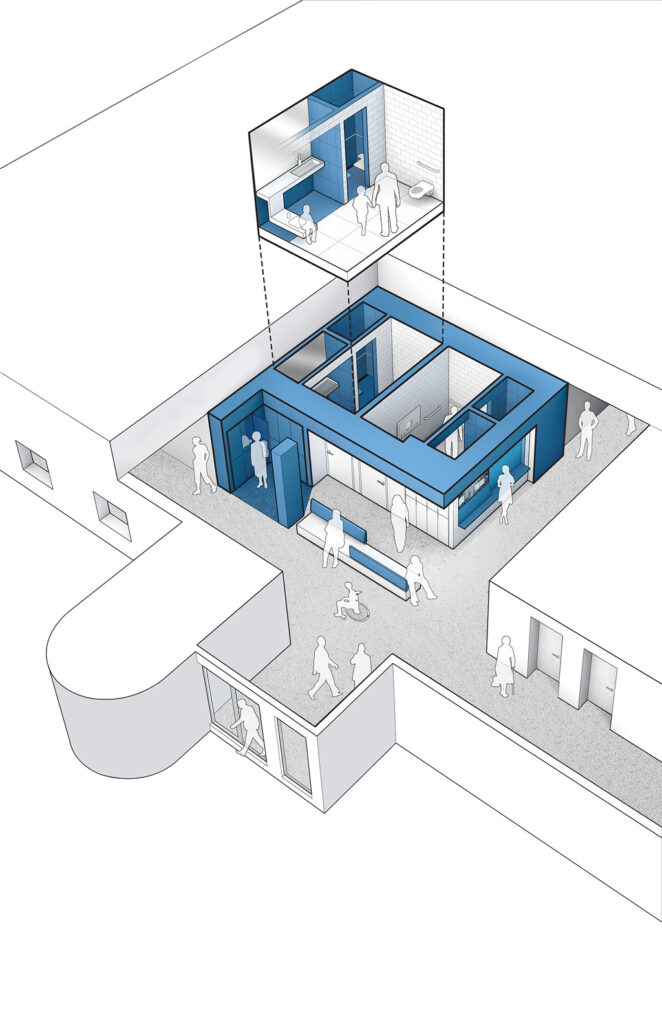
On the lower level of the Field House, we are creating two inclusive changing rooms. Located off the main entry, the all-gender changing rooms act as a vestibule that welcomes visitors entering the building. Image courtesy of JSA (Joel Sanders Architect) and Brenna Thompson (Yale School of Architecture)
Visit AIA’s website for more information on the Innovation Awards.
About AIA
Founded in 1857, AIA consistently works to create more valuable, healthy, secure, and sustainable buildings, neighborhoods, and communities. Through more than 200 international, state and local chapters, AIA advocates for public policies that promote economic vitality and public wellbeing.
AIA provides members with tools and resources to assist them in their careers and business as well as engaging civic and government leaders and the public to find solutions to pressing issues facing our communities, institutions, nation, and world. Members adhere to a code of ethics and conduct to ensure the highest professional standards.

